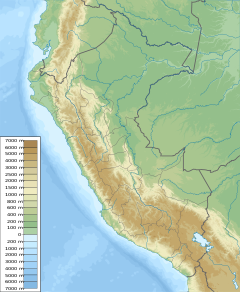| Yanama | |
|---|---|
| Highest point | |
| Elevation | 5,473 m (17,956 ft) |
| Coordinates | 13°18′11″S72°48′34″W / 13.303078°S 72.809412°W |
| Geography | |
| Location | Cusco, Peru |
| Parent range | Andes, Vilcabamba |
Yanama [1] is a 5,347 metres (17,543 ft) mountain in the Vilcabamba Range in the Andes of Peru. [1] It is located in the region of Cusco.
